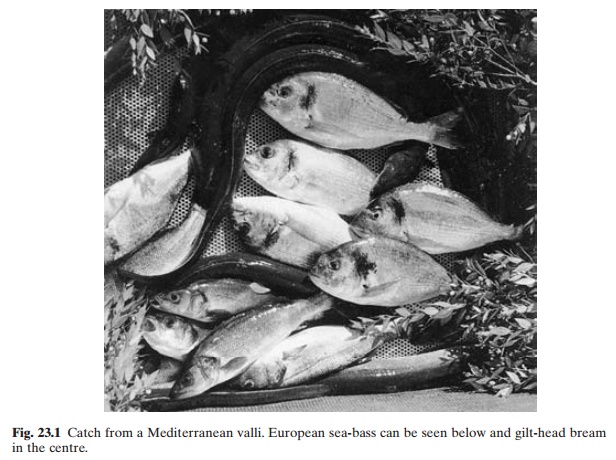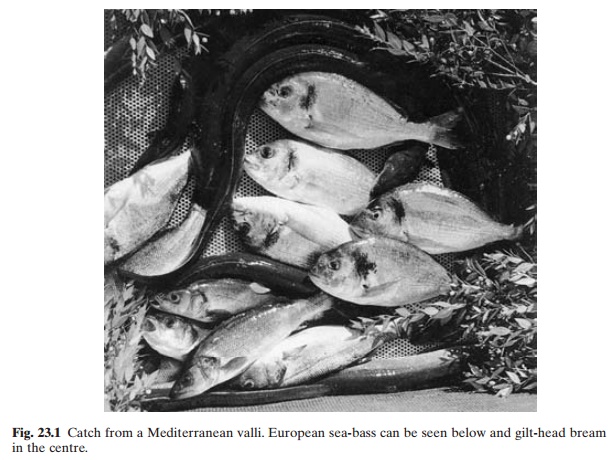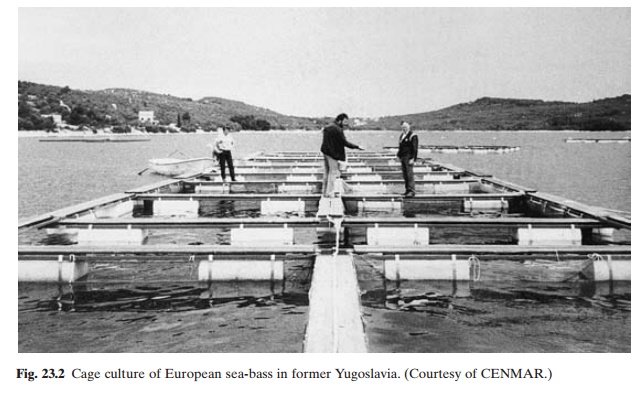Chapter: Aquaculture Principles and Practices: Sea-Basses and Sea-Breams
Sea-Basses and Sea-Breams: Introduction

Sea-Basses and Sea-Breams
Aquaculturally important sea-bass species belong to the families
Serranidae and Centropomidae. The European sea-bass common in the Mediterranean
and in eastern Atlantic is Dicentrarchus
labrax. The Asian sea-bass, also knownas kakap (cockup) and giant perch, is
Lates calcarifer (family
Centropomidae), distributed inthe littoral waters from Iran to Australia.
The two major species cultured are the gilt-head sea-bream (Sparus aurata) in the Mediter-ranean
countries and the silver sea-bream (Pagrus
aurata) in the Far East, but there are several other species of sea-breams,
which are gaining aquacultural importance. Global farmed production of gilthead
sea-bream has been reported as 86160 tons in 2000, and the lead producer
country was Greece (FAO, 2002). The corresponding silver sea-bream production
was 82811 tons, with the major share of production being from Japan. The other
species of sea-breams which are entering the arena are blackhead sea-bream (Acantopagrus schlegeli) (the major
producer country being Taiwan), sharp-snout sea-bream (Diplodus puntazzo) (mainly in Italy), white sea-bream (Diplodussargus) (Greece), two-breasted
sea-bream(Diplodus vulgaris)
(Turkey), goldsilk sea-bream (Acanthopagrus
berda) (Kuwait), cobalty sea-beam (Sparus
hasta) (Kuwait), goldlined sea-bream (Rhabdosargus
sarba) (Hong Kong), white sea-bream (Diplodussargus)
(Greece), yellowfin sea-bream(Acanthopagrus
latus) (Bahrain), yellowback sea-bream (Dentex
tumifrons) (Taiwan), common dentex (Dentex
dentex) (Spain), common pandora (Pagellus
erythrinus) (Greece), red porgy (Pagrus
pagrus) (Greece) and crimson sea-bream (Evynnis
japonica) (Japan).
Common to all sea-basses and sea-breams are their euryhaline and
carnivorous habits. They fetch high prices in the markets. Landings from
capture fisheries are reported to be declining and there is an increasing and
unsatisfied market in major consuming areas. Consequently, aquaculture-produced
sea-basses and sea-breams have the potential for enhancing both domestic and
export trade.

Historically, the European and Asian species of sea-bass and the
gilthead sea-bream have been constituents of stocks in the Mediter-ranean
vallis (fig. 23.1), Indian bheris and coastal fish farms in Southeast Asian
countries. In spite of their predation on other finfish and crustaceans, their
market and culinary values made them acceptable species in culture systems.
Their stocks in these impoundments were derived from eggs, larvae or fry
brought in by the incoming tides. Small-scale efforts in recent years to grow
wild and hatchery-reared fry and fingerlings in cages and ponds have shown
potential for intensive culture of these species (fig. 23.2). Methods of
artificial propagation have been developed and commercial-scale production is
becoming established in a number of areas.

Related Topics